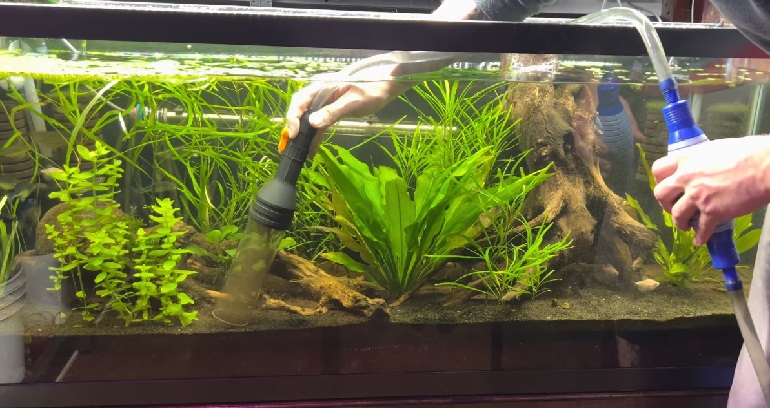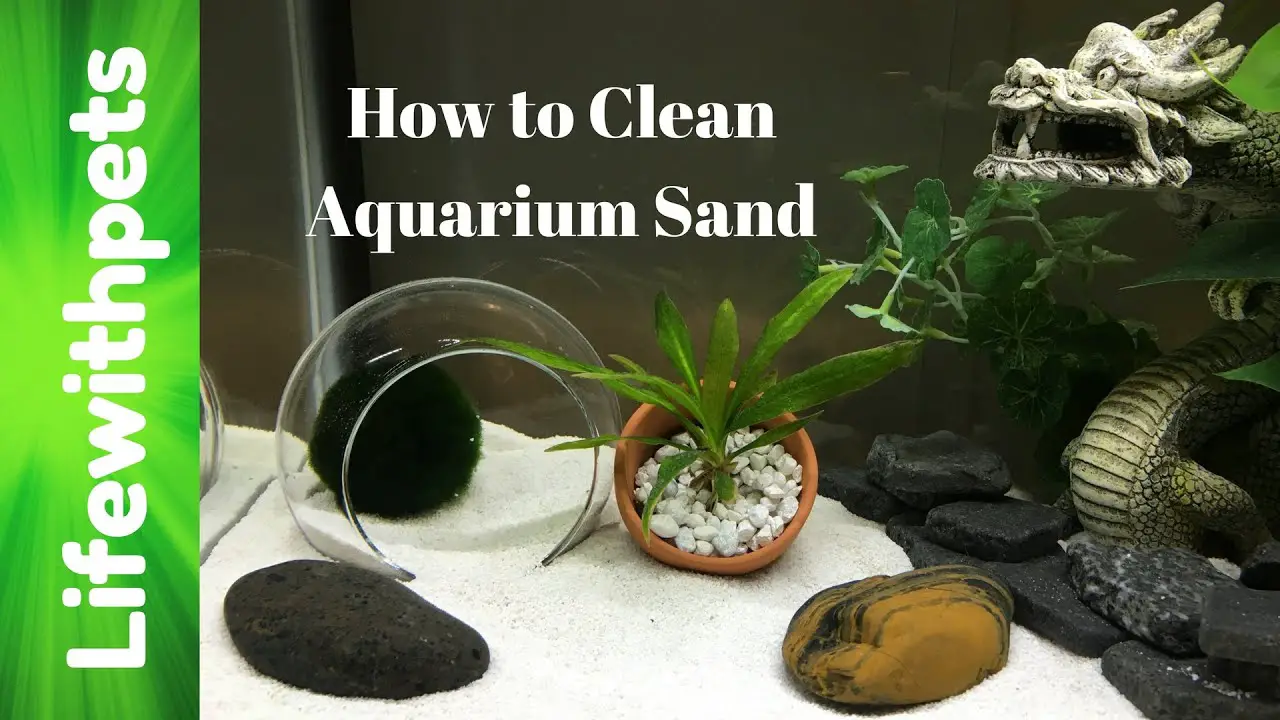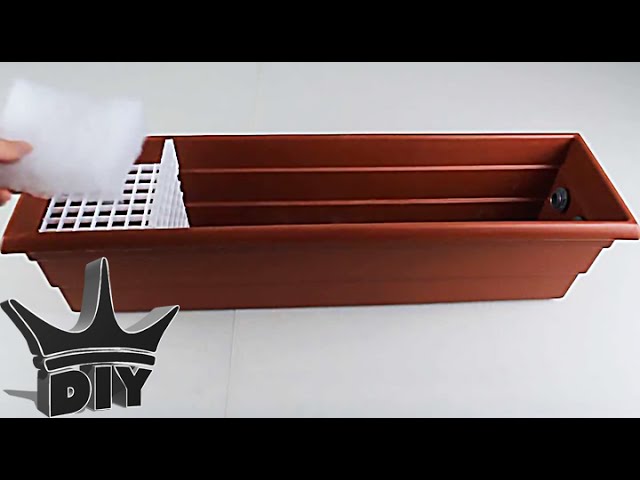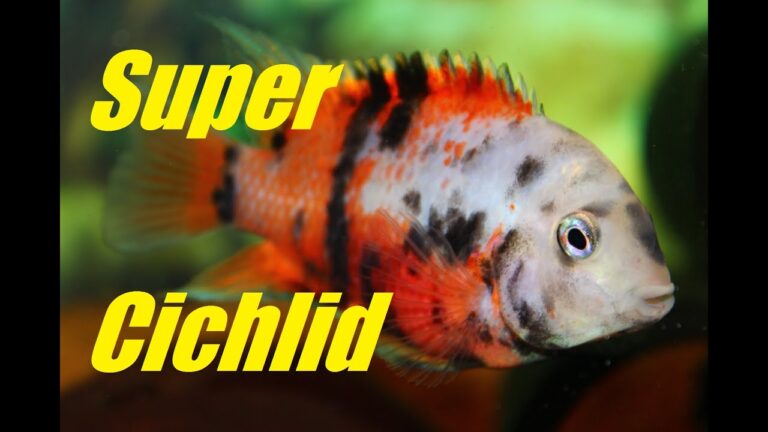How to Clean Aquarium Sand? (12 Things to Know)
Aquarium sand should be cleaned regularly to keep the tank healthy and free of harmful bacteria.
Start by removing any visible debris from the sand with a small net or aquarium vacuum cleaner.
Next, you should rinse the sand in a bucket of lukewarm water until the water runs clear.
Allow the sediment to settle at the bottom before pouring out most of it and leaving just enough for a thin layer on top.
You can then use an algae scrubber or brush to remove any algae build-up from rocks or decorations that are in contact with the sand.
Discard all used water and return clean sand back into your aquarium.
This process will help maintain good water quality for your fish, as well as extend its lifespan significantly.
Remove the Aquarium Sand: Start by removing all the sand from your aquarium. You will likely need to use a gravel vacuum or siphon to do this safely and efficiently.
Rinse in Water: Next, rinse the sand with warm water several times until it runs clear and free of debris and organic matter.
Soak in Vinegar Solution: To remove any calcium deposits that may be on the surface of your aquarium sand. Fill up a bucket with 1 part vinegar and 4 parts water.
Then soak your tank’s sand for about an hour before rinsing again with fresh warm water until it runs clear.
Place Back into Tank: Once you are satisfied that all debris has been removed from the sand,.
Place it back into your tank and make sure its level is even across the substrate bedding for optimal results.
How to Deep Clean Aquarium Sand?
Deep cleaning aquarium sand is an important part of maintaining a healthy and balanced tank.
Start by removing the fish, plants, and other decorations from the tank before draining the water.
Then, move the sand to a separate container with lukewarm water and gently stir it in order to loosen any debris that may be stuck inside.
Once stirred, use a siphon hose or turkey baster to remove any excess dirt from the surface of the sand.
Rinse out your container multiple times until no more residue appears at the bottom.
Return clean sand back into your aquarium and refill with fresh dechlorinated water!
How to Prepare Sand for Aquarium?
Preparing sand for an aquarium is important to ensure the health of your fish.
To properly prepare sand, start by rinsing it with cold water in a bucket or container until the water runs clear.
Then, soak it overnight in dechlorinated water to remove any dust particles.
After soaking, rinse again and test pH levels before adding it to your tank; aim for a neutral pH of 7.0-8.0 if possible.
Use an air pump or powerhead to move the sand around while vacuuming away any debris that may have been stirred up during preparation.
How to Clean Fish Poop from Sand?
Cleaning fish poop from sand can be a daunting task, but it’s not impossible! The first step is to scoop out the majority of the solid waste.
After that, you can use a wet/dry vacuum or an aquarium gravel cleaner to suck up any remaining poo and debris.
For tougher stains, try using an old toothbrush with some hot water and vinegar solution.
Once you’re done cleaning the sand substrate, rinse it off in fresh water before adding it back into your tank.
How to Clean Black Sand for Fish Tank?
When cleaning black sand for a fish tank, it is important to make sure that all the debris and particles are removed.
To do this, use a vacuum to siphon away any large pieces of debris or dirt, and then rinse the sand with water several times until it runs clear.
After rinsing, let the sand dry in the sun before adding it to your aquarium.
Forgot to Wash Aquarium Sand
Forgetting to wash aquarium sand before adding it to your tank can cause cloudy water and a decrease in water quality.
This is because the dust particles contained within the sand may contain unwanted contaminants that could be harmful to fish or other aquatic species.
To avoid this, make sure you rinse and clean the sand thoroughly with fresh water prior to adding it into your tank.
Is Sand Hard to Clean in an Aquarium?
Cleaning sand in an aquarium is not a difficult task, however it does require regular maintenance.
Sand can be cleaned by performing regular water changes and vacuuming the substrate.
If algae or debris buildup occurs, use an algae magnet to remove any particles from the surface of the sand.
Live plants can also help keep your aquarium’s sand clean as they will absorb any excess nutrients that could cause unwanted growth.
Best Aquarium Sand Cleaner
Aquarium sand cleaners are essential tools for maintaining a healthy and clean tank environment.
They can help to quickly remove debris, uneaten food, algae, and other waste particles from the substrate.
The best aquarium sand cleaners come with multiple cleaning heads that allow you to adjust the angle of suction so you can reach all areas of your tank easily.
They often have adjustable water flow settings that provide greater control over how much dirt is removed from the substrate during each cleaning session.
Aquarium Sand Vacuum
An aquarium sand vacuum is an essential tool for keeping your aquarium clean.
It works by sucking up debris and detritus from the bottom of the tank, while leaving behind beneficial bacteria that aid in breaking down waste.
Aquarium sand vacuums work best on coarse sands, as finer substrates can be difficult to suck up and may end up clogging the filter.
They are a great way to keep your substrate free of dirt and other materials that can build-up over time, ensuring a healthy environment for aquatic life.

Credit: worldanimalfoundation.org
Are You Supposed to Clean Aquarium Sand?
Yes, cleaning aquarium sand is an important part of maintaining a healthy and balanced aquatic environment.
When setting up your tank for the first time, it’s important to clean the sand before adding it to the tank.
This helps to remove any debris like dust or dirt that may have built up on the surface of the sand grains, which can be harmful to your fish if left unchecked.
Cleaning also helps keep water clarity clear by removing any particles that could cloud it over time.
To clean aquarium sand, you should first use a gravel vacuum cleaner and siphon off any large pieces of waste and leftover food in order to keep bacteria levels low.
Afterwards, you can add fresh tap water into a bucket with two tablespoons of salt per gallon.
While stirring vigorously with your hands, this will help break down organic matter more quickly so that they don’t accumulate in your tank over time.
Rinse off all remaining dirt from the sand grains using a mesh filter bag or sieve.
Before adding them back into your tank, this will ensure no impurities are present in their new home!
How Often Should You Rinse Aquarium Sand?
It is recommended to rinse aquarium sand before placing it in the tank, but how often should you repeat this process?
Rinsing your sand should be done periodically to ensure that any excess dust particles are removed.
This can occur every 1-2 months or whenever your water levels appear cloudy.
When rinsing out the aquarium sand, use a 5 gallon bucket and fill it with lukewarm tap water until just above the amount of sand you plan on using for your tank.
Place one cup of sand into the bucket at a time and stir gently with your hand.
If there’s excessive cloudiness or debris in the water, repeat the process until clear.
Once all of your desired amount of clean aquarium sand has been collected.
Drain out as much dirty water as possible from each bucket by pouring off through a sieve or net.
You may also want to consider adding an additional filter system and performing weekly partial water changes.
During maintenance sessions in order to keep up with regular cleaning and prevent any build-up that could cause problems down the line.
How Do You Clean Sand?
Cleaning sand can be a tricky task as it is prone to becoming dirty and dusty very easily.
However, with the right approach and materials, you can clean your sand quickly and efficiently.
The first step in cleaning sand is to remove any large debris such as sticks, stones or other objects that may have found their way into the mix.
Once this has been done, use a garden hose or bucket of water to rinse off the remaining dirt and dust from the surface of the sand.
If necessary, use a stiff bristled brush to scrub away tough spots and stains.
Once finished rinsing off all loose dirt particles, allow your sand to dry completely before returning it back into its original container for storage until needed again.
Is Aquarium Sand Hard to Maintain?
Maintaining an aquarium with sand can be a bit daunting at first, but it is not as hard to maintain as you may think.
The key to keeping your tank clean and healthy is regular maintenance.
This includes regularly vacuuming the sand, checking for any buildups of debris or algae, and monitoring the pH level of the water in the tank.
It’s also important to ensure that there are no sharp objects in the tank that can injure fish or other aquatic creatures living within it.
You’ll need to replace old sand every few months so that it remains free from pollutants and bacteria buildup.
If you’re using live plants in your aquarium then make sure they’re getting enough light and nutrients by adding fertilizers periodically.
With all these measures taken care of properly, maintaining an aquarium with sand should be fairly easy!
Conclusion
Cleaning aquarium sand is an important part of maintaining a healthy and clean tank.
It may not seem like it at first, but with some simple steps and the right tools, you can quickly restore your aquarium’s sand to its original condition.
By using these tips on how to clean aquarium sand, you will be able to keep your tank looking its best for years to come!






